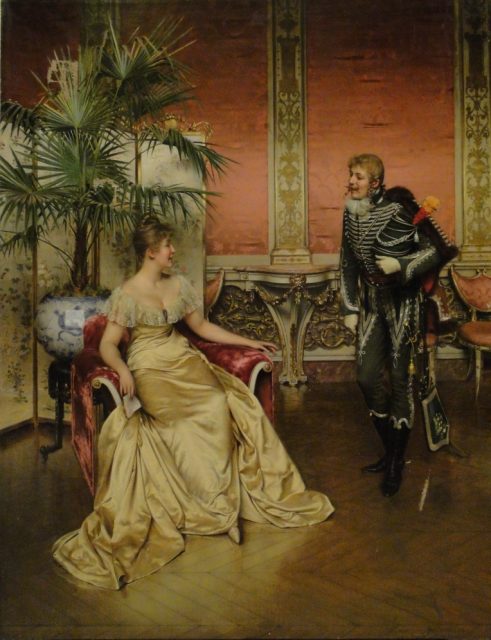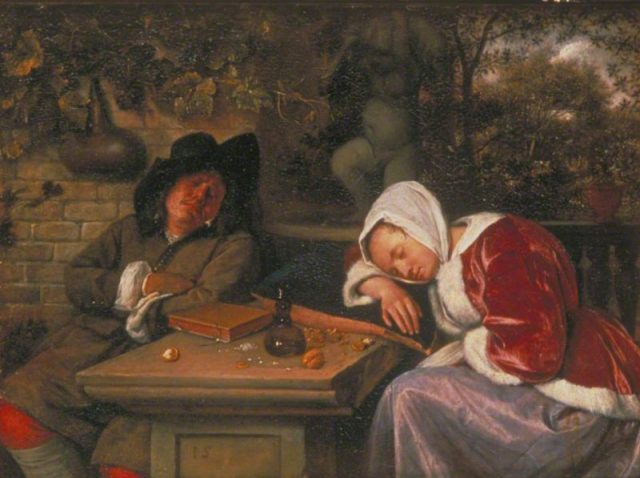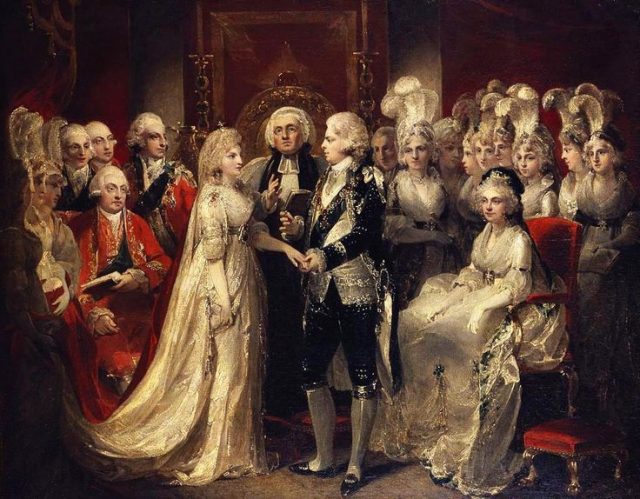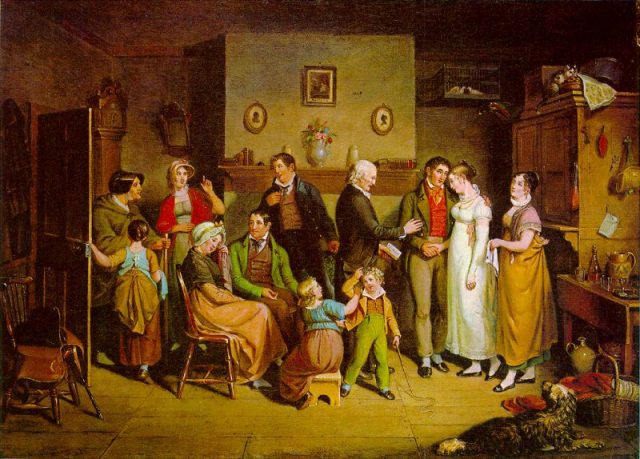Intimate conversation over candlelit dinners. Romantic getaways. The proverbial flowers and chocolates. Timeless, right? Not quite.
Like most things, dating was far different back in the day — Puritan and Colonial times, to be exact. Take a look at these quaint customs from centuries ago.
Can you hear me now?

Puritan couples couldn’t be left alone together, not with all of those gossipy villagers lurking about. So if a besotted boy wanted to see the object of his infatuation, he had to visit the girl at her family’s home. Private conversation was impossible, since a) houses were tiny, and b) family members would be sitting in one room.

Throw in a watchful and protective grandmother, sometimes seated smack-dab between the two, and you’ve got an awkward situation. So how could the two lovebirds become better acquainted? With a courting stick: a long wooden tube through which they could talk to each other, without their sweet nothings being overhead. (Fat chance.)
A tidy little bundle

Take a close look at marriage and birth records from the late 18th century, and this much is clear: 30 to 40 percent of American brides were with child at the time of their wedding. Believe it or not, it wasn’t as scandalous as you might think — so long as the girl got hitched to her baby’s father. Problem was, men couldn’t always be trusted to do “the right thing.”
Enter “bundling” (or bed courting, as it was also known), which was introduced to the Colonies in the 18th century by Scottish and Welsh immigrants. If a couple was courting and seriously considering marriage, they were encouraged to spend a night together in the girl’s bed, under her family’s roof, to ensure compatibility — without whoopee. That’s right: This “getting to know you” activity was usually condoned by the parents.

Rules to be followed: underclothes could not be removed and copulation was a no-no. To ensure that nothing naughty would transpire, either a bundling board (a large plank placed between the two) or a bundling sack (basically, a big ol’ sleeping bag, sewn up in the middle) was employed.
Not that couples didn’t occasionally sneak in some nookie. But if the girl did become pregnant, at least there were witnesses to prevent her playmate from denying the deed or skipping town.
Cutting to the chase

Common law marriages existed in England as far back as the Middle Ages, and immigrants brought the custom to the New World. Handfasting, as it was called, meant you didn’t need an authorized official presiding over proceedings — or even a license for that matter.
Couples who didn’t have their parents’ permission might choose to recite their vows in the Pagan fashion, alone or before witnesses. They simply hold hands and proclaimed that they wished to be husband and wife. Yep, that easy.

You could declare anywhere: apparently, some couples got hitched in front of their “honeymoon” bed. Interestingly, blacksmiths often officiated, and the anvil would become a kind of symbol of the forging of strong, unbreakable bonds.
Let daddy do the dating

What’s love got to do with it? In the early 18th century, particularly for wealthy families, very little.
As anyone who’s ever read Jane Austen knows, marriage was little more than a business transaction between a young woman’s father and the prospective groom.
At stake: the girl’s dowry — and the suitor’s prospective inheritance.
Wild pitch
By the mid-1800s, pioneers heading West weren’t all that happy with the female offerings — or lack thereof — at the small frontier towns they settled in.
To find permanent companionship, adventurous types advertised for wives in local newspapers.
Read another story from us: Nipple Rings for Aristocrats – The Wild Victorian Fashion Trend
Get a load of this ad, posted by a none-too-picky type in an Arkansas paper: “Any gal that got a bed, calico dress, coffee pot and skillet, knows how to cut out britches and can make a hunting shirt, knows how to take care of children can have my services till death do us part.”
